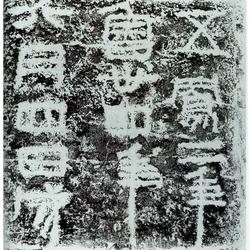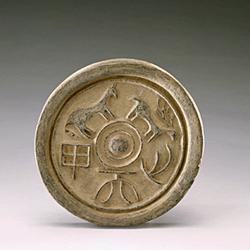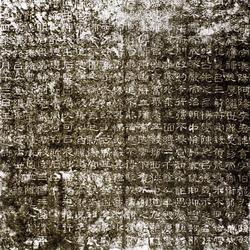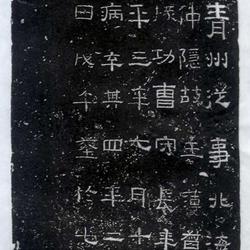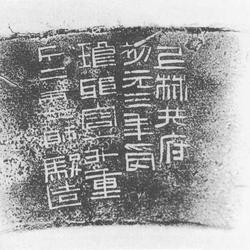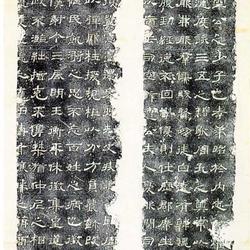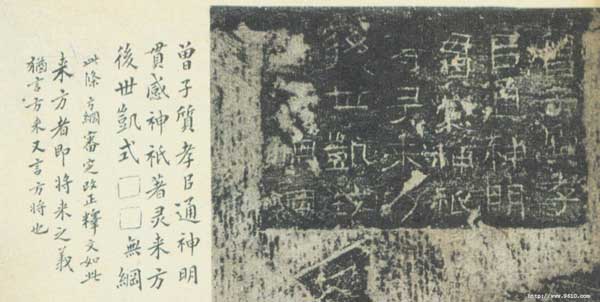
"Wu's Temple Portrait Stone" was excavated by Huang Yi in the 51st year of Qianlong's reign in the Qing Dynasty (1786). There is an official script inscription next to it. There are 1,069 characters in existence, and it is one of the smaller stone calligraphy works of the Han Dynasty. Fang Shuo's calligraphy on this stone in the Qing Dynasty says: "There are very few small ones in the Han Dynasty, and it is especially rare to see small, refined and numerous ones."
Relevant information:
"Portrait Stone of Wu's Temple" Portrait Stone of the Eastern Han Dynasty. In Wuzhai Mountain, south of Jiaxiang City, Shandong Province. It used to be called "Wuliang Temple", which is the general name for Wuliang, Wurong, Wuban, Wukai Mingshi Temple and Shuangque in front of the Wu family tomb in the Eastern Han Dynasty. Among them, Wuliang Temple is the earliest. It was built over several decades starting from the first year of Jianhe (147) by Emperor Huan of the Han Dynasty. The portraits in the stone temple were carved by stonemasons such as Meng Fu and Li Dimao. The contents of the stone portraits include historical figures, historical stories, gods and monsters, the life of the tomb owner, etc. They are valuable materials for studying the history and social life of the late Eastern Han Dynasty. The picture adopts the technique of reduced bottom and positive carving (i.e. plane bas-relief) to highlight the figure's shape, and uses incised lines to depict the figure's folds and facial features. The shape is rough and clumsy, and the artistic style is vigorous and simple. There is an official script inscription next to the image.
"Wu's Temple Portrait Stone" has a total of 43 extant pieces and 1,069 characters of official script inscriptions. It is an important and most famous batch of Han Dynasty ancestral hall portrait stones with clear chronology. In 1961, the State Council listed it as one of the first batch of national key cultural relics protection units. Wu's Temple and the Shuangque are still preserved in situ.
The "Picture Stone of Wu's Temple" had been discovered as early as the Song Dynasty. It was recorded in the "Epigraphic Records" of the Song Dynasty epigrapher Zhao Mingcheng and the "Collection of Ancient Records" by the writer Ouyang Xiu. Later, after many floods and siltation, the stone chamber was buried underground. In the 51st year of Qianlong's reign in the Qing Dynasty (1786), Huang Yi, an epigrapher who was an official in Jining, and others went to search here in person. For the first time, they discovered three stone chambers, Han steles, Han palaces, etc., and later discovered many portraits. Stones were excavated and cleaned. The reappearance of this batch of stone carving art has attracted the attention of scholars because of its rare "unsophisticated and exquisite portraits".

